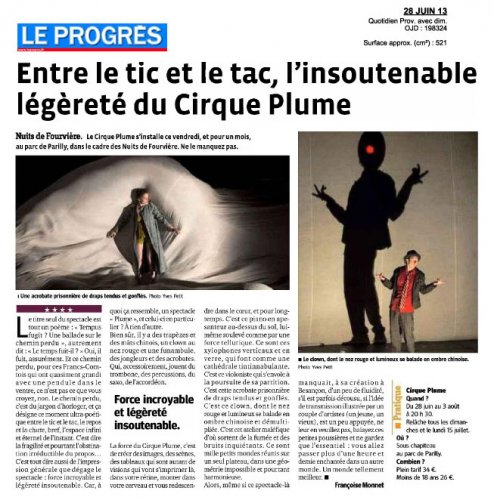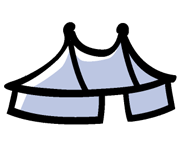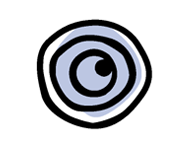Le Progrès28 June 2013
Between the tick and the tock, the insupportable lightness of Cirque Plume
 "Nuits de Fourvière". Cirque Plume set up on Friday, for a month, at Parilly Park, to take part in Nights at Fourvière. Don’t miss it.
"Nuits de Fourvière". Cirque Plume set up on Friday, for a month, at Parilly Park, to take part in Nights at Fourvière. Don’t miss it.
The only title of the show is just a poem: "Tempus fugit ? Une ballade sur le chemin perdu", in other words: "Does time fly?" Yes, it certainly flies. And these spaces between, for these people from the Franche-Comté who have practically grown up with a pendulum in their stomachs, it’s not what you think, oh no ... Le chemin perdu is a clockmaker’s term, and means the ultra-poetic moment between the tick and the tock, the rest and the fall, the infinite, eternal space of an instant. That’s to say the fragility, yet the inflexible stubbornness, of the idea ...
And that’s also to say the general impression which lies behind the show: incredible strength and unsupportable lightness. For what’s a "Plume" show like, especially this one? Nothing else.
Obviously, there are trapezes and Chinese masts, a clown with a red nose and a tightrope walker, jugglers and acrobats - who, if need be, play the trombone, the drums, the saxophone, the accordion.
Incredible strength and unsupportable lightness.
The strength of Cirque Plume is in creating images, scenes, tableaux which form visions which are going to stay there behind your eyes, rising to your brain and going down to your heart, and for a long time. It’s this weightless piano, above the ground, raised up there as if by some telluric force. It’s those vertical glass xylophones, who seem like a chiming cathedral. It’s the violinist who flies after his music. It’s the imprisoned acrobat, with his torn, inflatable sheets. It’s the clown, whose bright red nose wanders off into the Chinese shadows and multiplies. It’s the malevolent workshop, with its puffs of smoke and worrying noises. It’s a thousand tiny worlds gathered together in a single place, in an impossible but harmonious geometry.
So even if this show lacks a little fluidity in its creation at Besançon, if it sometimes comes unstuck, if the ideas illustrated by a couple of artists (one young, one old) are a little strained, don’t be annoyed, just ignore these little details and stick to the main idea: you’re going to spend an enchanted hour and a half, in another world. A far better world.
Françoise MONNET









